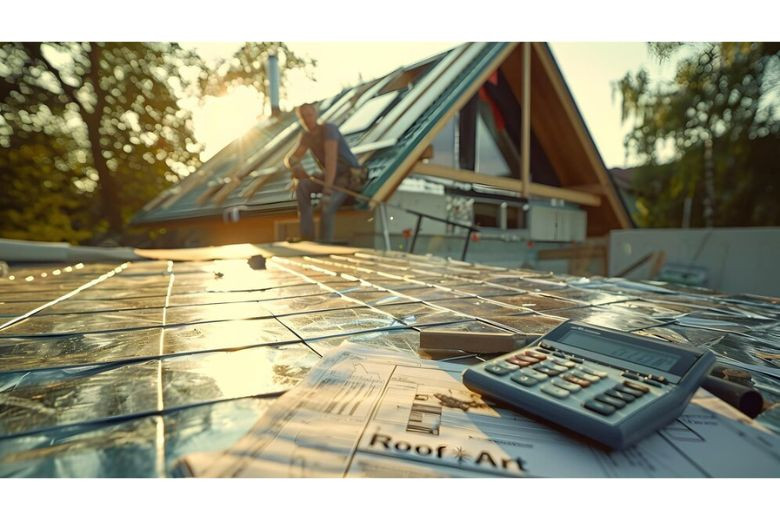How to Finance Your Roof Replacement: Loans, Grants, and Insurance
Posted on September 10, 2024 by Admin

One of the largest and most expensive tasks of home improvement a homeowner will face has to do with the replacement of a roof. Not only is it of structural importance, but it is also related to energy efficiency and general curb appeal. The cost may just feel overwhelming. Herein, we shall look into ways of financing your roof replacement using loans, grants, and insurance.
How Much Does it Cost to Replace a Roof?
Before talking about the different finance options, first of all, let's talk about the cost associated with replacing a roof. The typical cost for replacing a roof ranges between $5,000 and $15,000, according to the size of your roof, the material used, and the local labor price. Since it involves a huge investment in the roofing job, arranging appropriate finance for your roof replacement is quite important.
Loans for Roof Replacement
Loans are one of the most common ways through which people finance their roof replacement. Several kinds of loans can help you afford the roof replacement cost:
1. Home Equity Loans:
These loans enable one to borrow against the equity in their home. They usually charge lower interest rates because your home is used as collateral. This option works best if you have a lot of equity built up in your home.
2. Personal Loans:
Other options include unsecured personal loans. Since they are unsecured, there is no collateral required; thus, it's a good alternative if you don't have enough equity in your home. On the other hand, the interest rates may be a bit higher than with home equity loans.
3. Government-Backed Loans:
The FHA offers something called Title I loans for home improvement projects, such as roof replacements. They can help, in particular, those homeowners who have less-than-perfect credit.
Grants to Replace Roofing
Grants are an excellent option to fund your roof replacement in case you are eligible, with no burden to pay them back. Some available options include:
1. Weatherization Assistance Program (WAP):
Provides grants to improve energy efficiency, including roof repairs and replacement, especially to low-income households.
2. Housing Preservation Grant:
This grant is provided by the USDA. It supports low-income property owners in rural areas to make the required home repairs. Under this, roof replacement could be included.
3. Local and State Programs:
Many grants for home improvements are available at the local and state levels. Contact your local housing authority to find out what options are available to you to fund your roof replacement.

Insurance for Roof Replacement
In some instances, a homeowner's insurance may be available to cover the whole or part of the cost of financing a new roof replacement. Here's how you can leverage insurance:
1. Damage Coverage:
In case your roof has been damaged due to an incident that is covered under your perils a storm or fire, for instance your home insurance may help cover the replacement cost. Be sure to document the damage well and contact your insurance provider within reasonable timing.
2. Roof Endorsements:
Some policies have roof endorsements for roof replacements. You should review your policy or discuss it with your insurance agent to determine what type of coverage you have.
3. Depreciation and Deductibles:
In many cases, insurance will not be able to cover the full replacement cost because of depreciation and deductibles. Know these terms before filing a claim.
Combination of Financing Options
In some cases, using a combination of the different finance options available may be the proper way to fund your roof replacement. This could include one grant that pays for a part and a loan that pays for another portion. Sometimes, insurance may pay for the damage-related costs, and personal loans may be applied for upgrading purposes.
Conclusion
Replacing your roof can be such a huge investment, but with the proper financial strategy, it will be very manageable to do so. Be it through loans, grants, or insurance, what will help in financing a roof replacement is to know all about them. Always quest for multiple avenues and seek advice from financial advisers or contractors who can find you some suitable solution in your specific case. With great planning and careful leveraging of the resources at hand, your home can be kept safe, efficient, and beautiful for decades.
Also Read :
How to Deal with Roof Leaks During a Storm
The Role of Gutters in Roof Maintenance and Longevity
The History and Evolution of Roofing Styles
How to Choose the Right Roof for Your Climate
Faqs
-
1. What retroactive loan is the best to finance your roof replacement?
The best loan options to finance a roof replacement are home equity loans, personal loans, and government-backed loans like FHA Title I loans, which typically have lower interest rates. Another choice is personal loans when a homeowner has a lack of enough equity. Government-backed loans are another option in getting more favorable terms for homeowners who are eligible.
-
2. Are There Any Grants Available for Funding Your Roof Replacement?
Yes, there are grants to fund the replacement of your roof. Programs like the Weatherization Assistance Program and the USDAs Housing Preservation Grant have the potential to give money for your project. Other grants may be local or state-based, so you would check with your local housing authority.
-
3. Will homeowner's insurance help fund your roof replacement?
In the event of damage from some peril, homeowner's insurance can help finance a new roof. It's very important to document the damages and be in touch with your insurance provider to know exactly what's covered under your policy and what exactly would be covered between the deductible and depreciation.
-
4. How can I combine different financing options for my roof replacement?
You can always mix and match different finance options to help pay for your new roof. This may be grant aid for parts of the grant expense, the rest put through a loan, with damage taken care of by insurance. This spreads, of course, your financial ordeal.
Recent Post
- Top Plumbing Service Providers in Arizona, USA
- Top 10 Electrician Service Providers in Alabama, USA
- Top 20 Roof Repair Service Providers in Alabama, USA
- The Role of Roof Insulation in Energy Efficiency: Tips and Tricks
- Understanding Roof Damage from Wildlife and How to Prevent It
- How to Choose the Best Roofing Contractor for Emergency Repairs
- Roofing Maintenance for Historic Homes: Preserving Architectural Integrity
- The Importance of Proper Attic Ventilation for Roof Health
- How to Identify and Prevent Roof Mold and Mildew
- The Best Practices for Removing Snow from Your Roof